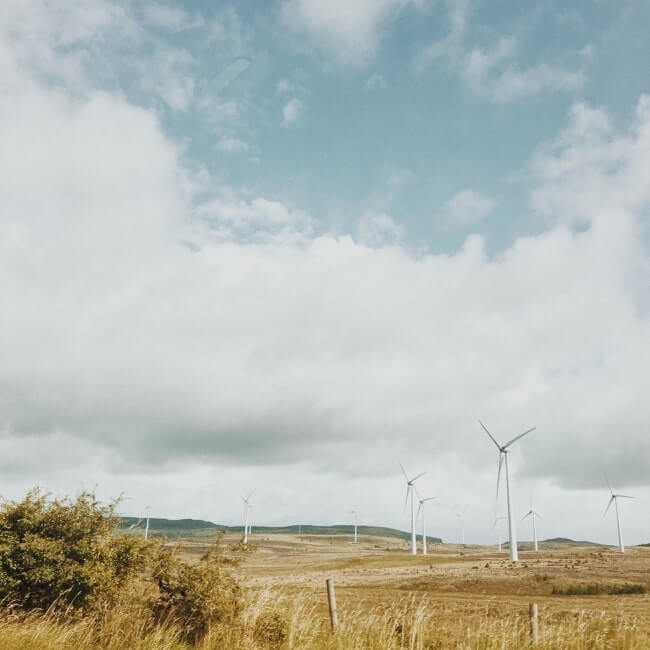A deep dive into CCUS technology and its potential in Chile

Chile is aiming to achieve carbon neutrality by 2050.
Decarbonizing the power grid is underway, as the focus tightens on trimming emissions across other sectors of the economy via energy efficiency and electrification and adoption of sustainable fuels.
Another tool in the energy transition toolbox is carbon capture, utilization and storage, or CCUS. While project economics and regulations are key hurdles that need tackling, CCUS has much potential in Chile.
To get the lowdown on the technology and more, BNamericas conducted an email interview with Rodrigo Brisighello, the Chile manager of Swedish consulting firm Afry.
BNamericas: Could you give us an overview of the current situation in Chile regarding carbon capture, utilization and storage?
Brisighello: Chile has much potential for the development of CCUS, thanks to its natural resources such as geologic formations suitable for underground CO2 storage. In this regard, considering Chile’s 2050 decarbonization goal, CCUS emerges as a key tool to address this challenge, complementing other mitigation strategies like renewable energy generation and energy efficiency.
However, to leverage this potential and the opportunities provided by this technology, Chile needs to advance in developing a clear and favorable regulatory framework that incentivizes the use of these technologies and the development of projects.
Additionally, reducing the current, and still very high costs, which currently require public-private financing, is necessary. This includes developing infrastructure for safe transportation and storage.
Lastly, but equally important, it’s crucial to increase public awareness and education about this technology, its benefits and potential impacts. This will be essential for garnering social acceptance, which is crucial for realizing future projects. Collaboration among the public, private and academic sectors will be vital to maximize the potential of this technology on the path to a sustainable future.
BNamericas: Where, in terms of industries or processes, could this technology be deployed in Chile?
Brisighello: CCUS technology in Chile has much scope for application in various sectors/processes that generate significant CO2 emissions, and with storage and/or reuse technology, these sectors could mitigate their impacts. Examples include the following:
1) Cement plants: Capturing CO2 from cement plant chimneys and storing it geologically or reusing it in the production of new construction materials would be a viable and more sustainable alternative.
2) Oil refineries: Capturing CO2 in these facilities and using it for the production of green hydrogen or e-fuels, for instance, is an opportunity to reduce their impact.
3) Fossil fuel power plants: Capturing CO2 in coal or natural gas power plants, combined with geological storage, significantly reduces greenhouse gas emissions associated with electricity generation.
4) Steel production: Capturing CO2 in steel production processes and reusing it in the manufacture of new steel products can contribute to sector decarbonization.
5) Chemical industry: Capturing and reusing CO2 can be used in the production of raw materials or low-carbon chemical products.
6) Biomass combustion: Capturing and storing or reusing CO2 can contribute to biomass energy sustainability.
7) Waste incineration: Capturing CO2 and treating it can minimize the environmental impact of incineration.
BNamericas: What kind of timeframes are we tentatively talking about?
Brisighello: Timeframes can vary based on factors such as technological progress, regulatory frameworks, financing availability and social acceptance. However, three periods can be visualized under current conditions:
– Early development (present-2025): Establishment and supplementation of specific CCUS project regulations, providing clarity and legal certainty for investments. Pilot CCUS projects are also developed across various sectors to validate technology under real conditions and generate valuable optimization data. Concurrently, there's a strong focus on researching and developing more efficient, economical and sustainable CCUS technologies to reduce costs and improve performance.
– Gradual implementation (2026-35): Technology expands to more industries and processes, focusing on those with the highest CO2 emissions and reduction potential. Infrastructure development for safe CO2 capture, transport and storage is crucial, including pipeline networks, underground storage facilities, and specialized ports. Public-private sector collaboration intensifies to finance CCUS projects, including fiscal incentives, subsidies and innovative financing mechanisms.
– Maturity and expansion stage (2036-onwards): CCUS technology becomes widely adopted as a tool for industrial decarbonization and energy generation in Chile. Integration with other low-carbon technologies such as direct air capture and green hydrogen production maximizes impact on climate change mitigation. As Chile gains experience in CCUS implementation, it is expected to export its knowledge and technology, contributing to global decarbonization efforts.
BNamericas: It seems that an obvious barrier could be cost. But it also seems that in the coming years, the carbon price could constitute a significant driver. What do you think about this?
Brisighello: Indeed, the high cost of CCUS technology is a significant barrier to its large-scale implementation. The high costs associated with CO2 capture, transport, storage and infrastructure development pose a significant challenge to the economic viability of CCUS projects.
However, the carbon price could play a crucial role in incentivizing the adoption of this technology in the coming years. It is expected to increase due to greater climate ambition, demand for low-carbon technologies and concern over climate change. A higher carbon price would reflect the real cost of CO2 emissions to society, making CO2 capture and storage options more economically attractive for emitting industries. In this context, a higher carbon price could act as a catalyst for CCUS implementation in Chile.
In conclusion, the carbon price has the potential to drive CCUS implementation in Chile. However, it alone will not be sufficient to ensure the success of implementation and must be part of a comprehensive strategy addressing technical, economic, and social barriers to widespread adoption of this technology.
BNamericas: Are there currently regulatory barriers?
Brisighello: While Chile has a regulatory framework to promote actions that mitigate climate change and promote green energy, there are still specific regulatory barriers that hinder large-scale implementation of CCUS technology.
Some pending issues include a lack of clear and precise definition of what constitutes a CCUS project, as well as uncertainty about responsibility for CO2 leaks during geological storage. This uncertainty creates doubts for investors and project developers. Specific permits and licenses for implementation have not been established, complicating the authorization and monitoring process for these projects.
There is also uncertainty about the technical and environmental requirements for this type of storage, as regulation of CO2 geological storage, a crucial stage in the CCUS process, is still under development.
Similarly, there is no certainty in terms of financing. Chile lacks specific financing mechanisms for CCUS projects, limiting access to capital for implementing this technology.
It is important to note that the Chilean government has taken some steps to address these regulatory barriers. In 2020, the national green hydrogen strategy was published, which recognizes the potential of CCUS for industrial decarbonization and proposes measures to facilitate its implementation. However, much remains to be done to create a solid and favorable regulatory framework for CCUS implementation in Chile.
BNamericas: Chile wants to produce synthetic fuels on a large scale. Since a key input is CO2, is there potential to use captured carbon in these processes or is it simply not feasible, at least for now, from a logistical or economic standpoint?
Brisighello: Indeed, Chile has ambitious plans to produce synthetic fuels (e-fuels) on a large scale. Captured CO2 from the atmosphere or specific sources of emission could be a key input in this process, replacing currently used petroleum and natural gas.
However, the technical and economic feasibility of using captured CO2 for e-fuel production in Chile faces several challenges. These include high costs, lack of infrastructure, technology development, and increased demand.
In my view, a crucial issue to advance in this path is to focus on e-fuel production technology from captured CO2. We are in the process of research and innovation, aiming to optimize efficiency and reduce costs. Cost reduction itself is a challenge, as CO2 capture technology remains expensive, which increases the final price of produced e-fuels. We must work to achieve more competitive prices.
Infrastructure challenges are also crucial to consider, as developing infrastructure for safe transport and storage of captured CO2 requires significant investments. However, for investments to be made, there must also be an incentive in terms of e-fuel demand, which is currently relatively low and could hinder the economic viability of large-scale projects.
BNamericas: What are the components of a typical carbon capture and storage system, for example, a system suitable for a cement plant?
Brisighello: Carbon capture and storage systems for an industrial facility have three stages: capture, transport, and safe CO2 storage, with additional components for drying and monitoring.
The choice of capture technology depends on the specific characteristics of the plant, such as the type of production process and CO2 emissions. Generally, the processes required in each stage are as follows:
CO2 capture:
– Pre-combustion: CO2 is captured before the combustion process, separating it from combustion gases through chemical or physical processes.
– Oxy-combustion: Pure oxygen is used instead of air in combustion, generating CO2-rich combustion gases, facilitating capture.
– Post-combustion: CO2 is captured from combustion gases after the combustion process through absorption or adsorption processes.
CO2 transport:
– Compression: Captured CO2 is compressed to high pressure to facilitate transport.
– Pipelines: Compressed CO2 is transported through pipelines to the storage site.
– Ships or trucks: In some cases, CO2 can be transported by ships or trucks if the storage site is far from the plant.
CO2 storage:
– Geological formations: CO2 is injected into deep and stable geological formations, such as saline aquifers or depleted oil and gas reservoirs.
– Mineralization: CO2 is chemically mineralized to convert it into stable solid material, such as carbonates.
Additional components for a cement plant:
– Drying system: Captured CO2 may contain moisture, requiring a drying system to remove water before transport and storage.
– Monitoring system: A monitoring system is implemented to ensure the integrity of CCS system components and prevent CO2 leaks.
BNamericas: Finally, what services does Afry offer in this field, and are there any anticipated trends in demand for them in the coming years?
Brisighello: Afry is an international company of Nordic origin well positioned to capitalize on the growing CCUS market, with over 20 years of experience, technical knowledge and an innovative approach. The company is committed to helping clients decarbonize their operations and contribute to a more sustainable future. At Afry, our vision is "Making Future."
We offer a wide range of CCUS-related services, including feasibility assessment and analysis, helping clients evaluate the technical and economic potential of implementing CCUS in their operations. This includes identifying CO2 emission sources, selecting appropriate capture technologies, assessing transport and storage options, and conducting cost-benefit studies.
Afry also provides detailed design and engineering services for CCUS projects, from CO2 capture to transport and storage, supported by our experience in designing CCUS systems for a wide range of industries, including cement, steel, energy, and oil refineries, among others.
Additionally, we manage projects, ensuring efficient and timely execution. At Afry, we handle all stages of the project, from planning and design to construction and commissioning, and contribute to research and development to advance towards more efficient and economical CCUS technologies. We collaborate with universities and research institutes to advance the state of the art in this technology.
We also provide consulting services on policies and regulations, advising governments and organizations to promote regulatory frameworks that incentivize CCUS adoption and ensure environmental protection.
Regarding the demand for CCUS services, significant growth is expected in the coming years, driven by increased climate ambition, rising carbon prices and technological development, among other factors.
Subscribe to the leading business intelligence platform in Latin America with different tools for Providers, Contractors, Operators, Government, Legal, Financial and Insurance industries.
News in: Infrastructure (Chile)

Chile ends H1 with US$13.6bn infra, water investments under environmental review
The oldest proposal is terminal 2 at Valparaíso port that was submitted in 2014, the 2018 approval of which was partially reversed in a court ruling.

Ministers of Health and Public Works lead the groundbreaking ceremony for the new Puerto Varas hospital
The work will benefit more than 150,000 inhabitants of Puerto Varas, Cochamó, Llanquihue, Frutillar, Fresia and Puerto Montt (Alerce sector).
Subscribe to Latin America’s most trusted business intelligence platform.
Other projects in: Infrastructure (Chile)
Get critical information about thousands of Infrastructure projects in Latin America: what stages they're in, capex, related companies, contacts and more.
- Project: El Melón tunnel retender
- Current stage:

- Updated:
2 months ago
- Project: Fourth Bridge Las Compañías
- Current stage:

- Updated:
2 months ago
- Project: Improvement of Route 66 Camino de la Fruta (Second Concession)
- Current stage:

- Updated:
2 months ago
- Project: New San Jose de Melipilla hospital
- Current stage:

- Updated:
2 months ago
- Project: New High Hospice Hospital
- Current stage:

- Updated:
2 months ago
- Project: International Antofagasta dry port
- Current stage:

- Updated:
2 months ago
- Project: Ruta 5 highway concession, Caldera - Antofagasta stretch
- Current stage:

- Updated:
2 months ago
- Project: Diego Aracena airport expansion and upgrade
- Current stage:

- Updated:
2 months ago
- Project: New Carlos Van Buren Hospital
- Current stage:

- Updated:
2 months ago
- Project: Upgrade of Barros Luco Trudeau hospital
- Current stage:

- Updated:
3 months ago
Other companies in: Infrastructure (Chile)
Get critical information about thousands of Infrastructure companies in Latin America: their projects, contacts, shareholders, related news and more.
- Company: Servicio de Salud Metropolitano Occidente
-
Servicio de Salud Metropolitano Occidente is responsible for the operation of a network of seven general hospitals and two emergency units in the cities of Santiago, Talagante, ...
- Company: xpd global
-
The description included in this profile was taken directly from an official source and has not been modified or edited by the BNamericas’ researchers. However, it may have been...
- Company: Servicio de Salud Viña del Mar-Quillota (SSVQ)
-
The Viña del Mar-Quillota health service (SSVQ), dependent on Chile's Ministry of Health, is in charge of providing health services in 18 municipal districts in Valparaiso regio...
- Company: ArqDesign Arquitectos Consultores Ltda. (ArqDesign)
-
The description contained in this profile was taken directly from an official source and has not been edited or modified by BNamericas researchers, but may have been automatical...
- Company: Time Based Management Consulting SpA (TBM Consulting SpA)
-
The description contained in this profile was taken directly from an official source and has not been edited or modified by BNamericas researchers, but may have been automatical...
- Company: Empresa Portuaria Arica (EPA Arica)
-
Empresa Portuaria Arica (EPA) is an entity creted by law 19.542 from 1988 (which aims to modernize the state's port sector). Is a standalone public corporation engaged in the ma...
- Company: Sacyr Construcción S.A.




